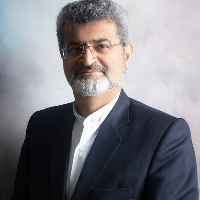The Design Pattern of Optimal Combined Envelope in Generating Solar Electricity Using Genetic Algorithm in Iran's Cold Climate
According to the International Energy Agency, the construction sector accounts for more than 33 percent of total energy consumption per capita as the largest energy consumer globally, while in Iran, the share is accounting for 40 percent. Meanwhile, the loss of nearly 11 percent of electrical energy while transmitting it through grid lines to cities has led to the rapid growth of a decentralized generation of electricity at end-use through building integrated photovoltaic (BIPV) systems over the past fifteen years. Exposing to the Sun, façades have great potential to supply the electricity needs of energy-efficient buildings using photovoltaic panels. However, the improper orientation to the radiation direction, especially in summer, reduces the efficiency of PV panels integrated into the facades. Aiming to increase the efficiency of the southern BIPV’s facade, this research introduces an optimal combined pattern of PV panels and flat reflectors as an integrated system capable of improving both the intensity and the area of solar irradiation on panels.
The research has an applied approach, and the method of the research is founded on experimental and simulation models. Research tools used in the study process include descriptive geometry to analyze solar radiation and reflection on the panels, study models to consider the reflections, and Grasshopper plugin in Rhino software environment as a parametric tool to simulate the proposed integrated envelope. Ladybug plugin has also been used to extract solar radiation properties from the climate information file generated by Meteonorm software. At first, the experimental and analytical method was used to find the best concept for the combination, and then the logical reasoning method was applied to select the best pattern among the possible alternatives for a combined, concentrated photovoltaic facade. At the second stage, defining the constructing parameters, the proposed envelope is simulated aiding Grasshopper software. The parameters are optimized using the genetic algorithm through the Octopus plugin. At the third and final stage, input data, related to the index days, entered to the algorithm and optimization process was done so that the best values have been introduced for each input data to fulfill the research objectives. Then through a comparative process the best setting for each month, and finally for the entire year was selected and introduced.
Having determined the optimum constructing parameters, the study calculated the proposed geometry output efficacy. The results showed significant increase in output power up to 87.38% in summer (June 21), 36.33% in spring (March 21), and 17.83% in winter (December 21) with an average of 46.44% during the year. The findings of the study addressed the six main parameters of the combined envelope influencing the efficiency. These parameters can be divided into two groups based on their effect. The first group includes lateral angle of side mirrors, lateral angle of underneath mirrors, horizontal depth of side mirrors with 52.75, 47.75, and 39.25 percent impact on "surface area of radiation" and with 64.5, 39.33, and 51.75 percent effect on the "increase in radiation intensity" respectively. The second group, meant, the number of panels in the vertical direction, side mirrors slope angle and the underneath mirrors ‘slope angle with 34.75, 23.25 and 18.75 percent of the impact on “the area of radiation" respectively, and 10.5, 15, and 13.7 percent of the effect on the "increase in radiation intensity" are at the fourth to sixth order of influence on the proposed envelope- efficiency. It’s proved that changing the most vital parameters affect the amount of “increase in radiation” up to 64.14% and cause 62.21% variation on “increasing the area of reflection” values while for the least influencing parameters, these items were calculated 15.85% and 15.90%, respectively.
Facades integrated photovoltaic panels have low efficiencies due to the non-optimal angle of the building envelope to the radiation, especially in summer. On the other hand, the need to design openings, particularly in the southern facade of the building, reduces the solar system’s efficiency by reducing the area of installable panels. In this study, the strategy of combining a flat reflector with PV panels in the form of a novel geometry was used to form the main idea to increase the efficiency of BIPVs. In this research, the two main criteria meant, radiation intensity and the area of reflection, were considered as objective functions in optimization. The results showed that using the proposed integrated system during the year will increase the radiation intensity by an average of 38.8% and the reflection area by 46.70%. However, they will improve, in order, up to 71.41% and 100.53% in summer. In other words, using the proposed model, about 30% of the southern facade surface can be allocated to openings, and at the same time, the irradiated surface during the year is considered equal to the total facade surface. The study showed that the electrical output power in summer, using the proposed model, will increase to 88%, and for the two seasons of winter and spring, it will be 17.84 and 34.36%, respectively. The study showed that the proposed geometry could be introduced as a practical solution to enhance the façade integrated photovoltaic efficiency. So, it is capable of generating more electricity, especially in the cold climate of Iran.
- حق عضویت دریافتی صرف حمایت از نشریات عضو و نگهداری، تکمیل و توسعه مگیران میشود.
- پرداخت حق اشتراک و دانلود مقالات اجازه بازنشر آن در سایر رسانههای چاپی و دیجیتال را به کاربر نمیدهد.




